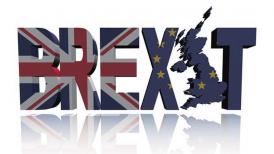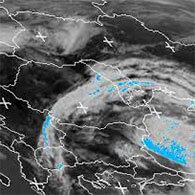Romania's media and entertainment market will grow to 3.4 billion USD by 2016, according to the PwC Global Entertainment and Media Outlook
Romania's media and entertainment market will grow to 3.4 billion USD by 2016, according to the PwC Global Entertainment 1546
Marime text
1546
Marime text
Bucharest, 17 July 2012. After a three year slump, Romania's media and entertainment market will finally enter positive territory this year, with the nominal overall market value returning to pre-crisis levels. According to this year's edition of PwC's Entertainment and Media Outlook report, the Romanian media and entertainment sector will grow from 2.7 billion USD in 2012 to 3.4 billion USD in 2016, with a compounded annual growth rate of 5.3%. Yet, in real terms, taking into consideration the inflation rate (estimated at an average of 3.3% over the analyzed period, between 2012 and 2016), the Romanian media and entertainment market will register a modest 2% compounded annual real growth rate.
Most of the growth will come from the growth of internet access expenditure (9.3% nominal CAGR rate), while advertising expenditure will register a moderate growth (4.8% CAGR up until 2016). As for end user spending on media products, the PwC reports estimates a negative real growth rate, with a nominal CAGR of 1.7% until 2016, under the projected inflation rate.
"It is clear that the media and entertainment sector was heavily affected by the global downturn. Yet this has overlapped with a more severe long term crisis of the sector itself, which is undergoing a radical transformation due to the growth in new digital technologies. These are turning media products into a commodity and are forcing media and entertainment companies to experiment with new forms of monetization for their products and services", stated John Webster, Partner, Assurance Leader, PwC Romania.
Although the new projections indicate a slowdown in the growth rhythm of the Romanian media and entertainment industry, the local market remains the third most dynamic in Central and Eastern Europe, after that of Russia (with a CAGR of 10.1%) and Turkey (9.8%), yet ahead of Hungary (5.1%), Poland (4.9%) and the Czech Republic (4.8%).
Despite ongoing economic uncertainty, the past year has seen global sales of tablets and smart devices reach record levels once again, underlining the growing revenue opportunities from digital delivery of entertainment and media (E&M) content and advertising to increasingly connected, and particularly mobile, consumers.
Global entertainment and media spending on digital advertising and consumer formats increased by 17.6 percent in 2011 compared with only a 0.6 percent rise in non-digital spending. Digital's share of total spend will grow from 28 percent in 2011 to 37.5 percent in 2016, and digital spending will account for two thirds of the total E&M spending growth by 2016.
According to PwC's annual Global Entertainment and Media Outlook 2012-2016, digital opportunities are now well understood by media companies, advertising agencies and advertisers themselves: the industry is approaching the ‘end of the digital beginning' as rising comfort levels with digital mean that it is becoming business-as-usual. Today's challenge for E&M companies is in the implementation of those digital strategies.
"The various segments of the E&M sector are at different stages of digital development, but they are all embracing digital to meet the ever-changing demands of consumers effectively and profitably. Entertainment and media companies have reached what we're calling the ‘end of the digital beginning': they've made the commitment to a digital future, and are now striving to make the necessary changes to their products, distribution and organisations", stated Florin Deaconescu, Partner, Leader of the Assurance services team for the Telecom, Media and Extertainment Industry, PwC Romania.
Digital maturity varies widely at a segment level. For example, global spending on digital recorded music formats will overtake physical distribution in 2015, reaching 55 percent of total revenues in 2016. And global spending on online and wireless video games will overtake console and PC games revenues in 2013. By contrast, the digital component of consumer magazines will account for only 10.4 percent of spending by 2016, up from 3.1 percent in 2011.
Global spending on music rose 1.3 percent in 2011, the first gain in many years, thanks to growth in the concert and music festival market and a slower decline in recorded music. Rises in digital music spending mean that overall, global spending on recorded music will finally begin to increase in 2013.
Mobile internet access subscriber numbers, a key driver of digital spending, will more than double during the next five years to 2.9 billion by 2016, of which almost 1 billion will be in China. In India, mobile internet subscribers will increase from a low base at a compound annual rate of 50.8 percent to 2016, making it the fastest growth market for mobile internet in the world.
By 2016, global mobile internet advertising revenues of $24.5 billion will grow at 36.5 percent compounded annually, to almost match the size of the classified internet advertising market. However, paid search at $78.1 billion and banner/display at $46.6 billion will retain the lion's share of the market in 2016. China's mobile internet advertising market will grow at a compound rate of 68.4 percent to reach $6.2 billion in 2016, making it the second largest market in the world behind the United States at $9.4 billion.
The newspaper publishing segment illustrates diverging trends across mature and growth economies. There will be ongoing declines in some territories such as the United States (declining 1.4 percent compounded annually to 2016, and expected to be worth 43.8 percent less in 2016 than 2007), but strong growth in countries where the digital infrastructure is less mature, such as Argentina (11.9 percent growth compounded annually to 2016), Indonesia (11.2 percent), and India (9.6 percent).
France passed the United Kingdom and Germany in 2011 to become the second largest TV subscriptions market in the world behind the United States, driven by a 76 percent rise in IPTV households. In the TV advertising segment, spending in Russia surged by 20.2 percent in 2011; by 2016, Russia will overtake the UK, Germany, Italy, and France to become the largest TV advertising market in EMEA (Europe, Middle East and Africa).
In the worldwide filmed entertainment market, over-the-top/streaming services will grow at a 21.0 percent CAGR to $11 billion in 2016, and will overtake spending through TV subscription providers in 2012.
Key stats from PwC's Global Entertainment and Media Outlook 2012-2016:
Global spending: Over the next five years, global spending on entertainment and media is projected to rise from $1.6 trillion in 2011 to $2.1 trillion in 2016, a 5.7 percent compound annual advance. This growth lags some way behind below the projected 6.6 percent compound annual increase in nominal GDP over the same period, reflecting the ongoing shift from higher-priced physical distribution to lower-priced digital distribution.
Largest 13 E&M markets: There were 13 countries in 2011 with total E&M spending (combined advertising and consumer/end-user revenues) above $25 billion, led by the United States at $464 billion, Japan at $193 billion, China at $109 billion, and Germany at $99 billion. China passed Germany in 2011 to become the third largest E&M market in the world. Of the leading countries, China and Brazil will be the fastest growing with projected compound annual increases of 12.0 percent and 10.6 percent, respectively. Brazil overtook South Korea in 2011 to move into ninth place, and during the next five years will pass Canada and Italy to become the seventh largest market.
Advertising spending: The most cyclically sensitive E&M spending stream, advertising spending increased by 3.6 percent in 2011. This represented a slowdown from the 7.0 percent gain in 2010 that was augmented by advertising associated with the FIFA World Cup and Winter Olympics, and by the rebound from a sluggish 2009. In spite of growth during the past two years, advertising still remained lower in 2011 than in 2007, the beginning of the Outlook's reported period. Overall global advertising will increase at a 6.4 percent compound annual rate from $486 billion in 2011 to $661 billion in 2016.
Advertising segment growth: Internet advertising will be the fastest-growing advertising category with a 15.9 percent compound annual increase, followed by the small video games advertising market, at 11.2 percent. Television advertising will average 6.6 percent compounded annually through 2016, out-of-home advertising will grow at a projected 5.0 percent compound annual rate, followed by radio at 3.8 percent compounded annually. The print segments-newspapers, consumer magazines, trade magazines, and directories-will average less than 3.5 percent compounded annually.
Consumer/end-user spending: Overall consumer/end-user spending will rise from $802 billion in 2011 to $966 billion in 2016, a 3.8 percent compound annual increase. Video games are expected to rebound and become the fastest-growing segment of consumer/end-user spending during the next five years with a 7.0 percent compound annual increase, followed by TV subscriptions and license fees at 6.2 percent compounded annually. The remaining segments (see notes) will grow at rates of 4 percent or less.
Internet access spending: Internet accesswhether wired or mobileis not an entertainment and media segment in itself, but is a fee to access content and is a key driver of entertainment and media spending in most segments. Global Internet access spending will rise from $317 billion in 2011 to $493 billion in 2016, a 9.3 percent compound annual increase.
Mobile Internet access: Spending on mobile access increased from 26 percent of total global Internet access spending in 2007 to 40 percent in 2011and will account for 46 percent in 2016, almost catching up with wired access spending.
Consumer magazines: Overall global spending declined during the past four years, although annual decreases in 2010-11 were less than 1 percent. The market is expected to begin to increase in 2012, averaging 1.3 percent compounded annually to $80 billion in 2016 from $75 billion in 2011.
Consumer and educational books: global spending on electronic books will rise at a CAGR of 30.3 percent to $20.8 billion in 2016, taking electronic books' share of total global book spending from 4.9 percent in 2011 to 17.9 percent in 2016.
Out-of-home advertising: Indonesia, Russia, and India will be the fastest-growing countries for out-of-home spending through 2016, with CAGRs of 11.2 percent, 11.0 percent, and 10.9 percent, respectively.
About the Outlook
PwC's Global Entertainment and Media Outlook 2012-2016, the 13th annual edition, contains in-depth analysis and historical and forecast data for advertising and consumer/end-user spending in 13 major industry segments across 48 countries. Find out more at http://www.pwc.com/outlook.
Segments covered by the Outlook
Business-to-business, Consumer and educational books, Consumer magazine publishing, Filmed entertainment, Internet access spending: wired and mobile, Internet advertising: wired and mobile, Newspaper publishing, Out-of-home advertising, Radio, Music, Television advertising, TV Subscriptions and license fees, Video games.
About PwC:
PwC firms help organizations and individuals create the value they're looking for. We're a network of firms in 158 countries with close to 169,000 people who are committed to delivering quality in assurance, tax and advisory services. Tell us what matters to you and find out more by visiting us at www.pwc.com/ro.
© 2012 PwC. All rights reserved.
PwC refers to the PwC network and/or one or more of its member firms, each of which is a separate legal entity. Please see www.pwc.com/structure for further details.
Urmareste-ne pe Grupul de Whatsapp
 Fondul Documentar Dobrogea de ieri și de azi
Fondul Documentar Dobrogea de ieri și de azi








_thumb2.jpg)

























